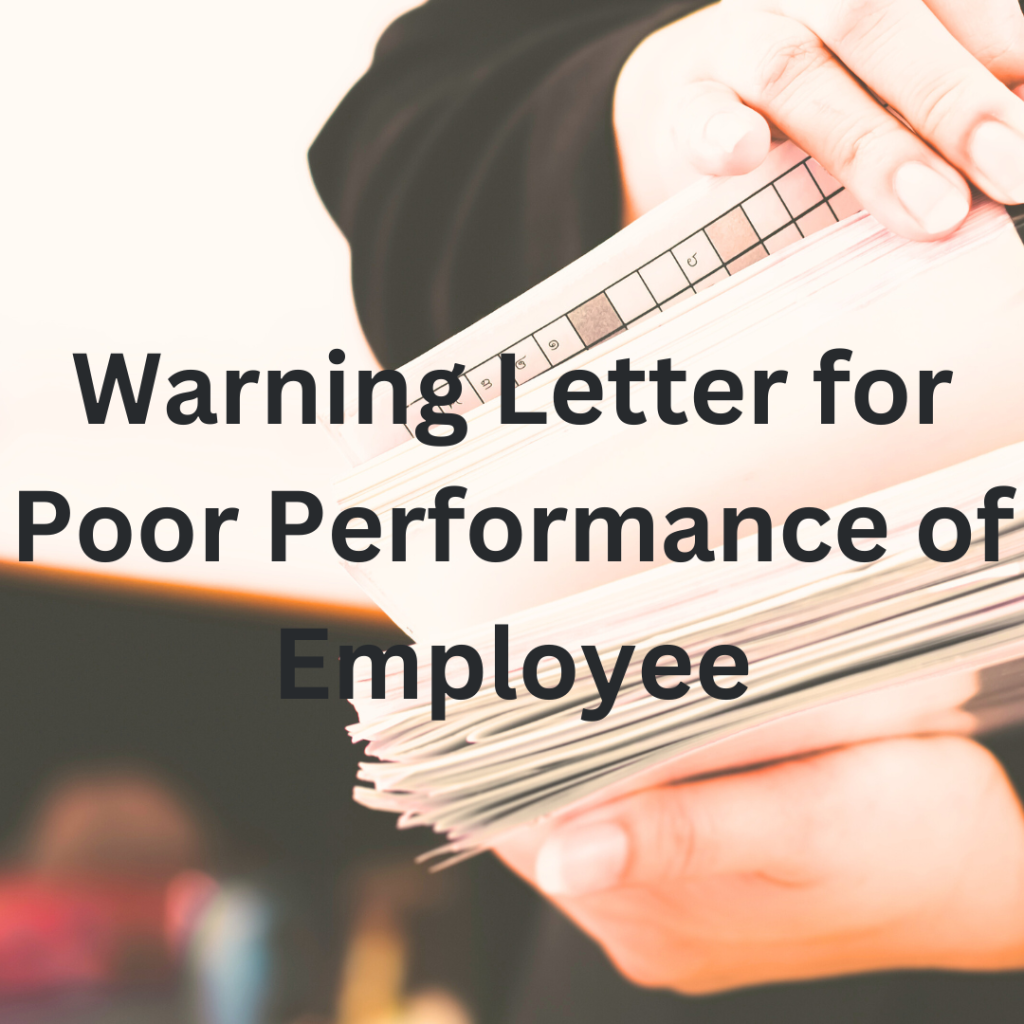
Warning Letter for Poor Performance of Employee: How to Write and What to Include
Managing employees can be a challenging task, especially when it comes to dealing with poor performance. When an employee’s performance is not meeting expectations, it is important to address the issue in a timely and effective manner. One way to do this is by writing a warning letter for poor performance. In this article, we will discuss how to write a warning letter for poor performance, what to include in it, and how to deliver it effectively.
What is a Warning Letter for Poor Performance?
A warning letter for poor performance is a formal document that is issued by an employer to an employee who is not meeting the performance standards set for their job. The letter serves as a formal notice that the employee needs to improve their performance within a specific time frame, or else face disciplinary action.
Writing a Warning Letter for Poor Performance
When writing a warning letter for poor performance, it is important to keep the following things in mind:
Be Specific: The letter should clearly outline the areas where the employee is falling short, and provide specific examples of their poor performance.
Be Objective: The letter should be written in an objective manner, without using any judgmental language or personal attacks.
Be Professional: The letter should be written in a professional tone, using proper grammar and spelling.
Be Clear: The letter should clearly state the consequences of continued poor performance, and the time frame for improvement.
What to Include in a Warning Letter for Poor Performance
The following are some of the key elements that should be included in a warning letter for poor performance:
Date and Employee Information: The letter should begin with the date and the name and address of the employee.
Introduction: The introduction should state the purpose of the letter and provide an overview of the employee’s performance issues.
Specific Performance Issues: The body of the letter should outline the specific performance issues, and provide examples of where the employee is falling short.
Consequences: The letter should clearly state the consequences of continued poor performance, such as further disciplinary action or termination.
Improvement Plan: The letter should include a specific improvement plan for the employee, outlining the steps they need to take to improve their performance.
Time Frame: The letter should provide a specific time frame for the employee to improve their performance.
Signatures: The letter should be signed by the employer and the employee, indicating that they have read and understood the contents of the letter.
Delivering a Warning Letter for Poor Performance
Delivering a warning letter for poor performance can be a difficult task, but there are some things you can do to make the process more effective:
Schedule a Meeting: Arrange a meeting with the employee to discuss the issues outlined in the letter. This will provide an opportunity for the employee to ask questions and seek clarification.
Be Clear: Be clear and concise when discussing the issues with the employee. Provide specific examples and avoid using vague or ambiguous language.
Listen: Listen to the employee’s concerns and feedback, and be open to their suggestions for improvement.
Follow-up: Follow-up with the employee regularly to monitor their progress and provide feedback.
Document: Document all discussions and meetings related to the warning letter, including any feedback or progress made by the employee.
Conclusion
Dealing with poor performance can be a challenging task for any employer. However, by writing a warning letter for poor performance, employers can clearly communicate their expectations and provide employees with a clear path to improvement. When writing a warning letter, it is important to be specific, objective, professional, and clear. By delivering the letter in a professional manner, scheduling a meeting to discuss the issues, and providing ongoing feedback and support, employers can help their employees improve their performance and avoid further disciplinary action.
It is also important to remember that writing a warning letter should not be the first step in addressing performance issues. Employers should provide employees with regular feedback and coaching, and give them opportunities to improve before resorting to disciplinary action. In addition, employers should ensure that performance expectations are clearly communicated to employees, and that they have the necessary resources and support to meet those expectations.
In conclusion, writing a warning letter for poor performance can be an effective way for employers to address performance issues and encourage improvement. When writing the letter, employers should be specific, objective, professional, and clear, and provide a clear improvement plan and time frame for the employee. By delivering the letter in a professional manner, scheduling a meeting to discuss the issues, and providing ongoing feedback and support, employers can help their employees improve their performance and avoid further disciplinary action. Remember, addressing poor performance early and effectively can help maintain a positive and productive workplace, and ensure the success of both the employee and the organization.